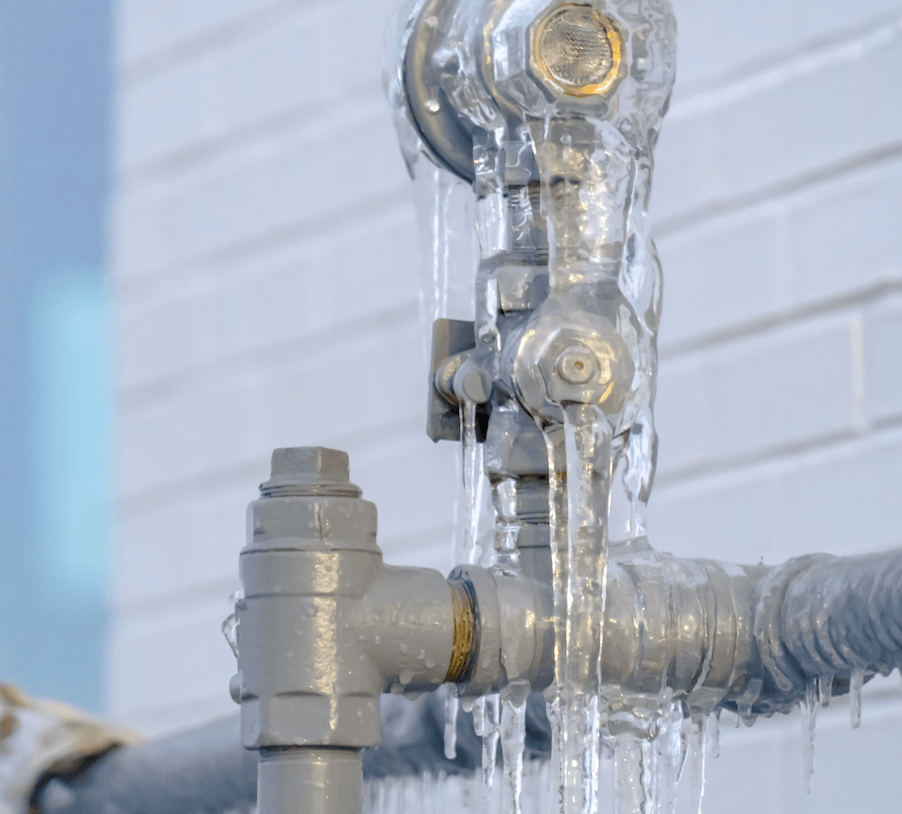How do you feel in regards to Helpful Tips to Prevent Frozen Pipes this Winter?

Cold weather can wreak havoc on your plumbing, especially by freezing pipelines. Below's exactly how to avoid it from taking place and what to do if it does.
Introduction
As temperature levels decrease, the danger of icy pipes boosts, possibly bring about pricey fixings and water damages. Understanding exactly how to stop icy pipelines is crucial for homeowners in cool environments.
Prevention Tips
Insulating prone pipelines
Wrap pipes in insulation sleeves or make use of heat tape to secure them from freezing temperature levels. Concentrate on pipelines in unheated or outside locations of the home.
Home heating strategies
Maintain indoor areas effectively heated up, specifically areas with plumbing. Open up cabinet doors to permit warm air to distribute around pipelines under sinks.
Exactly how to identify icy pipes
Seek lowered water circulation from taps, uncommon smells or noises from pipes, and visible frost on subjected pipes.
Long-Term Solutions
Structural adjustments
Think about rerouting pipelines far from outside wall surfaces or unheated locations. Add added insulation to attics, basements, and crawl spaces.
Upgrading insulation
Invest in premium insulation for pipelines, attics, and walls. Correct insulation aids keep consistent temperature levels and minimizes the threat of icy pipelines.
Shielding Outside Pipes
Garden pipes and outdoor faucets
Separate and drain pipes yard hose pipes prior to wintertime. Mount frost-proof faucets or cover outside faucets with insulated caps.
Recognizing Frozen Pipes
What triggers pipes to freeze?
Pipelines freeze when exposed to temperatures listed below 32 ° F (0 ° C) for prolonged periods. As water inside the pipelines ices up, it broadens, taxing the pipeline walls and potentially causing them to burst.
Dangers and damages
Icy pipes can bring about water interruptions, building damage, and costly fixings. Ruptured pipelines can flooding homes and trigger extensive structural damages.
Indicators of Frozen Water Lines
Determining icy pipes early can stop them from bursting.
What to Do If Your Pipes Freeze
Immediate activities to take
If you suspect icy pipelines, keep taps open to soothe stress as the ice melts. Use a hairdryer or towels taken in warm water to thaw pipelines gradually.
Final thought
Stopping frozen pipelines calls for aggressive actions and fast actions. By understanding the causes, indicators, and preventive measures, house owners can shield their pipes throughout winter.
5 Ways to Prevent Frozen Pipes
Drain Outdoor Faucets and Disconnect Hoses
First, close the shut-off valve that controls the flow of water in the pipe to your outdoor faucet. Then, head outside to disconnect and drain your hose and open the outdoor faucet to allow the water to completely drain out of the line. Turn off the faucet when done. Finally, head back to the shut-off valve and drain the remaining water inside the pipe into a bucket or container. Additionally, if you have a home irrigation system, you should consider hiring an expert to clear the system of water each year.
Insulate Pipes
One of the best and most cost-effective methods for preventing frozen water pipes is to wrap your pipes with insulation. This is especially important for areas in your home that aren’t exposed to heat, such as an attic. We suggest using foam sleeves, which can typically be found at your local hardware store.
Keep Heat Running at 65
Your pipes are located inside your walls, and the temperature there is much colder than the rest of the house. To prevent your pipes from freezing, The Insurance Information Institute suggests that you keep your home heated to at least 65 degrees, even when traveling. You may want to invest in smart devices that can keep an eye on the temperature in your home while you’re away.
Leave Water Dripping
Moving water — even a small trickle — can prevent ice from forming inside your pipes. When freezing temps are imminent, start a drip of water from all faucets that serve exposed pipes. Leaving a few faucets running will also help relieve pressure inside the pipes and help prevent a rupture if the water inside freezes.
Open Cupboard Doors
Warm your kitchen and bathroom pipes by opening cupboards and vanities. You should also leave your interior doors ajar to help warm air circulate evenly throughout your home.

We were introduced to that article about Prevent Frozen Pipes from someone on our other website. If you liked our article plz be sure to pass it around. Thank-you for your time invested reading it.
Start Now